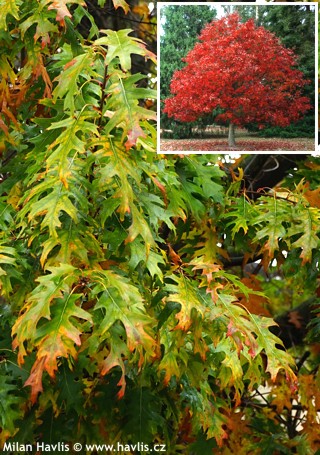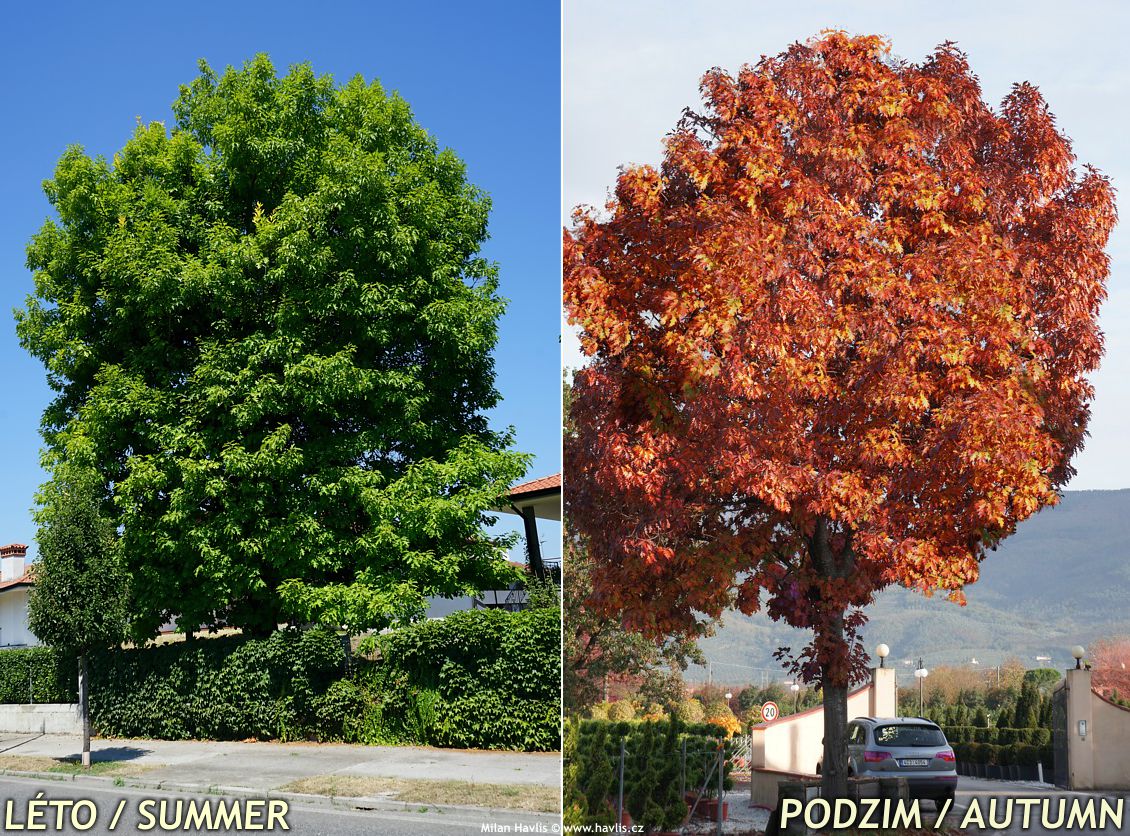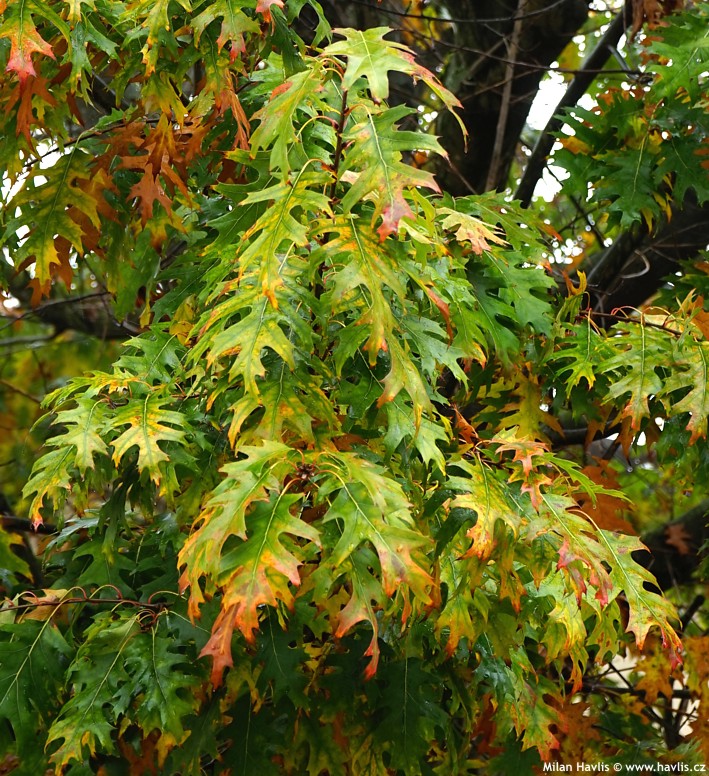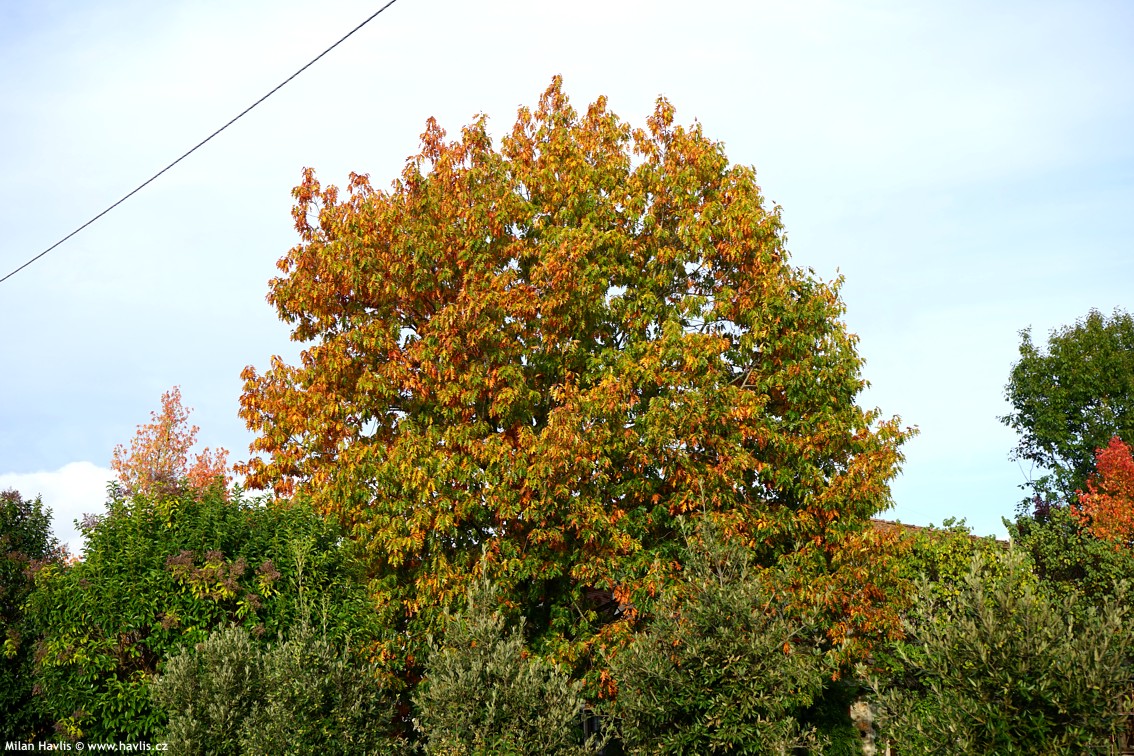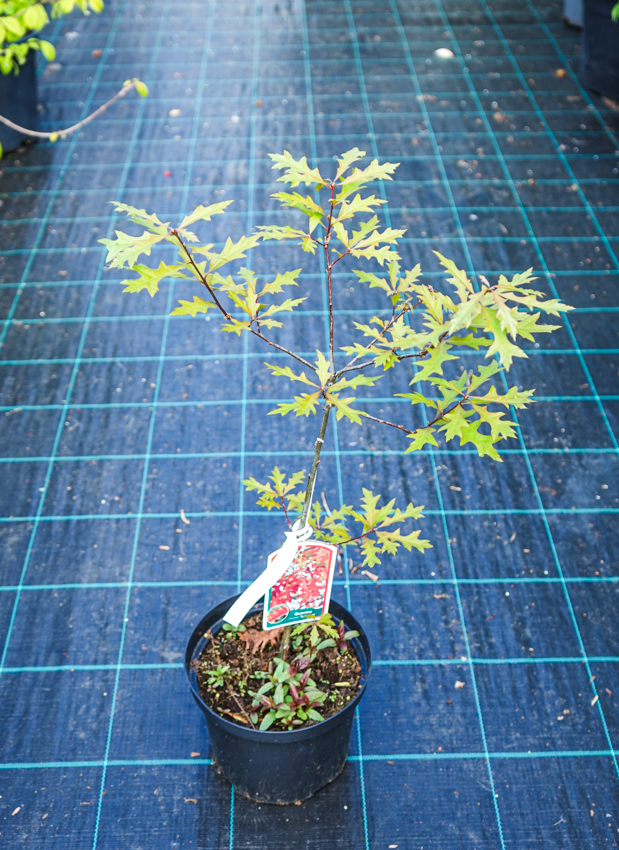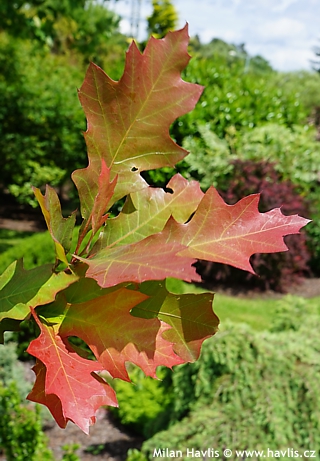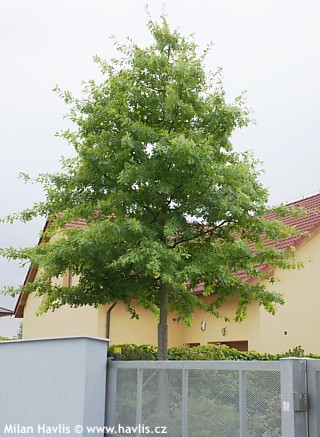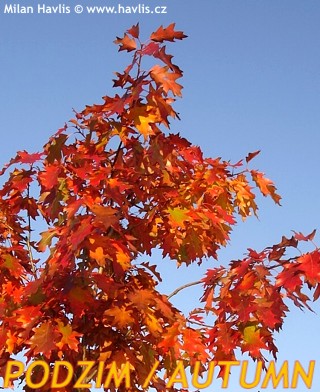Quercus coccinea scarlet oak
Quercus
Oaks are common trees of our natural woodlands. They border our ponds, occur naturally in our mixed forests, and make magnificent specimen trees in our parks and arboretums where less common species or rare varieties can be seen.
Scarlet oak comes from eastern parts of USA and is considered one of the toughest and long-lived species. It is quite difficult trying to differentiate it from closely related red oak (q.rubra) or pin oak (q.palustris) looking only at the leaves. Though quite variable, they are 15-20 cm long and deeply lobed just like those of the other species. You have to look up to see the canopy. Older trees of scarlet oak form almost sharply outlined, dome-shaped crowns, while red oaks are rounded and pin oaks remain pyramidal.
Leaves are deciduous, glossy, dark green, and turn amber orange in lime-based ground, or scarlet and crimson red in acidic soil. The tree cannot be found in North or Central European woodlands unless an odd plant escaped a collectors garden. But it is very common in Mediterranean macchia and man-made landscapes of South Europe where the soil is usually not very acidic hence its rather orange autumn colour. Its large size (15-20m tall and 10-15m wide) makes it a gorgeous lawn and shade tree in large gardens and parks, often chosen for its long-lasting autumn colour of leaves.
Oaks are not fussy about soil type and scarlet oak is more tolerant of lime-based soil as opposed to pin oak which may suffer from chlorosis. It requires well-drained soil without standing water. Once established it is extremely drought tolerant, withstands city pollution, and requires zero maintenance. Newly planted trees need to be staked for 2-3 years to establish. Roots are strong and can heave pavements. Fully hardy to about -34°C (USDA zone 4).
Last update 14-11-2019
Goods are shipped all over Europe. For Russia and U.K. and for further details please read about SHIPPING OPTIONS HERE.
Are you interested in a serious discount for orders NOV-FEB? Check your options here.
THE PRICES INCLUDE VAT of 15%. For quick conversion you can use 1 CZK = approx. 0.04 EUR
- STANDARD QUALITY - Plants of this group are 1st class quality with number of branches and overall density adequate to their size and age, considering they were container grown.
- DE LUXE QUALITY - This label guarantees a luxurious quality of manually selected plants that, compared to their height and age, are exceptionally dense and beautiful.
- EXTRA - These plants are usually mature and bigger specimens with exceptional overall appearance.
- STANDARD (as described in the plant form) means a tree with a trunk of 190-210 cm and a crown at the top, unless specified differently. The commercial size for trees is their girth measured in the height of 1m from ground.
- HOBBY - These plants are of the same quality as our standard-quality plants but younger and therefore cheaper.
- SHRUB - a woody plant with branches growing bushy from the ground level.
- HALF-STANDARD or MINI-STANDARD - a small tree with shorter trunk, its size is usually specified.
- FEATHERED - These are trees with branches growing already from the base of the trunk and up along the stem.
- GRASSES and PERENNIALS - Sizes given usually read the diameter of the pot or the clump, as specified.

































